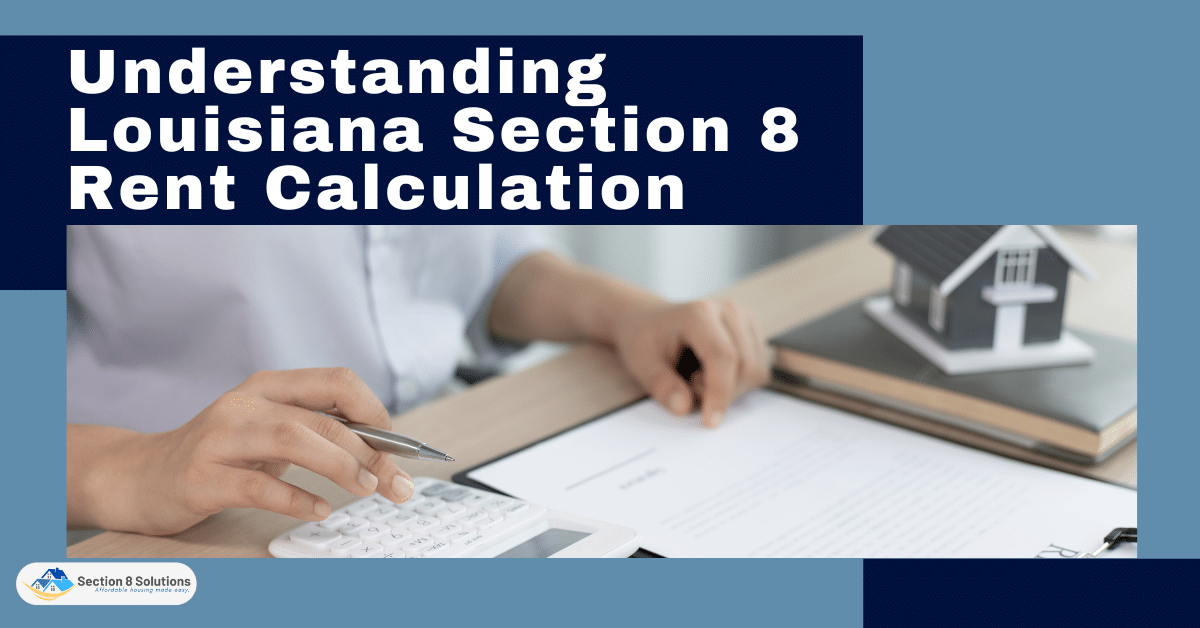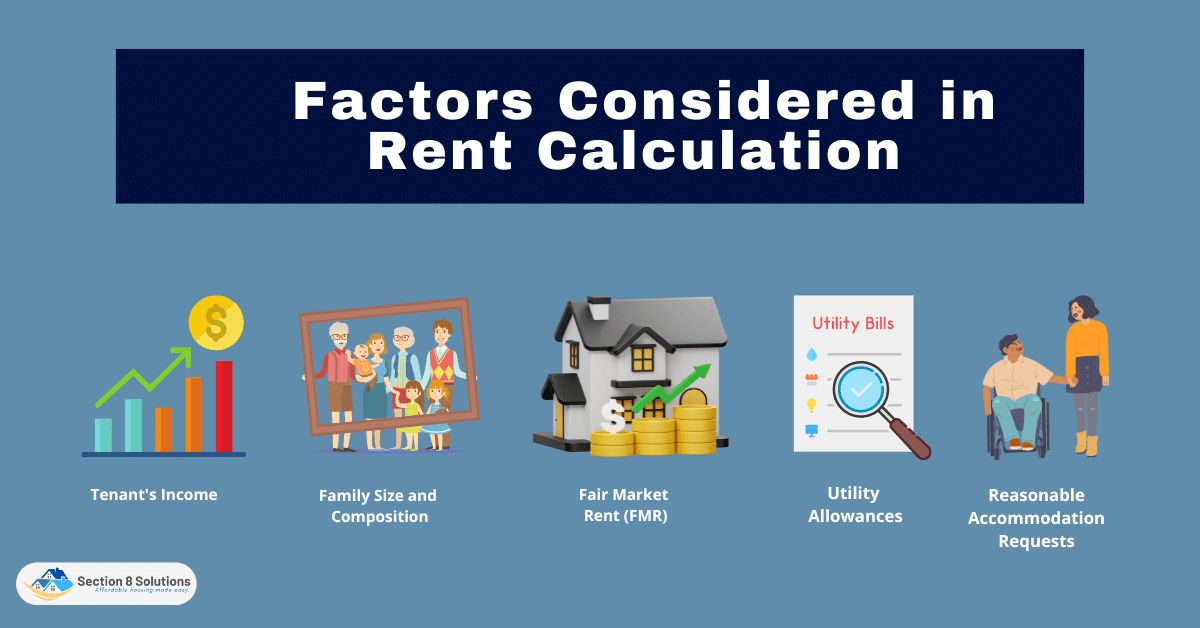Understanding Louisiana Section 8 rent calculation is crucial for both tenants and landlords. The calculation takes into account factors such as the tenant’s income, the unit’s fair market rent, and the tenant’s portion of the rent. This calculation ensures that low-income families receive affordable housing assistance while also providing fair compensation to landlords.
In this blog, we will delve into the significance of Section 8 in providing affordable housing assistance to low-income families in Louisiana.

The Basics of Louisiana Section 8
The Section 8 program in Louisiana is a crucial component of the nation’s affordable housing initiatives. Its primary goal is to assist low-income families, elderly individuals, and individuals with disabilities in obtaining safe and affordable housing. By providing rental subsidies, Section 8 ensures that eligible households can access suitable housing options that meet their needs.
Eligibility criteria for Section 8 in Louisiana typically consider an applicant’s income level, which must fall below a certain threshold based on family size. Additionally, applicants must be U.S. citizens or have eligible immigration status. Local housing authorities administer the program and are responsible for determining eligibility and providing assistance.

Factors Considered in Rent Calculation
When calculating rent under the Section 8 program in Louisiana, several key factors are taken into account to ensure fairness and affordability for low-income families. Understanding these factors is essential for both tenants and landlords participating in the program. The following factors are considered during the rent calculation process:

1. Tenant’s Income
The tenant’s income is a crucial factor in the rent calculation process under Section 8. It encompasses all sources of income that the tenant and their household receive. These income sources can vary and may include wages from employment, self-employment earnings, Social Security benefits, Supplemental Security Income (SSI), Temporary Assistance for Needy Families (TANF), retirement pensions, and any other recurring income.
2. Family Size and Composition
The housing authority uses established occupancy standards to determine the appropriate unit size for the household. These standards typically specify the number of bedrooms that a family is eligible for based on the composition of the household. For instance, a family with two parents and two children might be eligible for a two or three-bedroom unit, depending on the local occupancy standards.

3. Fair Market Rent (FMR)
The housing authority uses established occupancy standards to determine the appropriate unit size for the household. These standards typically specify the number of bedrooms that a family is eligible for based on the composition of the household. For instance, a family with two parents and two children might be eligible for a two or three-bedroom unit, depending on the local occupancy standards.
4. Utility Allowances
Section 8 calculates rent using utility expenses. Electricity, gas, water, and other utilities are included. Utility allowances are deducted from tenants’ income to modify rent for these expenditures.
Utility allowances approximate the usual local household’s utility costs. Tenants’ utility expenditures depend on use, family size, and local utility prices. Utility allowances simplify the rent computation for these expenditures.

5. Reasonable Accommodation Requests
If a tenant has a disability or requires special accommodations, reasonable accommodation requests may impact the rent calculation. These requests involve modifications or adjustments to the rental unit to ensure accessibility and meet the tenant’s needs.
By taking into account these factors, the rent calculation process aims to strike a balance between the tenant’s ability to pay and the landlord’s need for fair compensation. It ensures that low-income families receive affordable housing assistance while maintaining the financial viability of rental properties participating in the Section 8 program.

Income Determination
Determining the tenant’s income is a critical step in the rent calculation process under the Section 8 program. Income determination ensures that the rent amount reflects the tenant’s financial capacity and eligibility for housing assistance. Here’s an overview of how the tenant’s income is determined and its impact on rent calculation:
The tenant’s income includes various sources of earnings, such as wages, salaries, tips, self-employment income, alimony, child support, pensions, social security benefits, disability benefits, and any other regular income received by the household. It is essential to report all sources of income accurately to the local housing authority to ensure a comprehensive assessment.
However, certain types of income may be excluded from consideration during the rent calculation. These exclusions can vary, but common examples include income from Temporary Assistance for Needy Families (TANF), certain veterans’ benefits, income specifically designated for education expenses, and income received by dependents under the age of 18.

Rent Calculation Process
The rent calculation process under the Section 8 program in Louisiana involves several steps to determine the total tenant payment and the housing assistance payment. Here’s a step-by-step outline of the process:
- Determining the Total Tenant Payment (TTP): The Total Tenant Payment (TTP) is the portion of the rent that the tenant is responsible for paying. It is calculated as a percentage of the tenant’s adjusted income. The percentage is typically set at around 30% of the adjusted monthly income.
- Calculating the Tenant’s Portion of the Rent: To calculate the tenant’s portion of the rent, multiply the tenant’s adjusted income by the percentage set for the TTP. For example, if the adjusted income is $2,500 and the TTP percentage is 30%, the tenant’s portion of the rent would be $750 ($2,500 x 0.30).
- Determining the Housing Assistance Payment (HAP): The Housing Assistance Payment (HAP) is the portion of the rent covered by the Section 8 program. It is the difference between the total rental cost and the tenant’s portion of the rent. The HAP is paid directly to the landlord on behalf of the tenant.
- Calculating the HAP: To calculate the HAP, subtract the tenant’s portion of the rent from the total rental cost. For example, if the total rental cost is $1,200 and the tenant’s portion of the rent is $750, the HAP would be $450 ($1,200 – $750).
- Special Considerations or Exceptions: In certain situations, there may be special considerations or exceptions in the rent calculation process. For instance, if the tenant incurs significant medical expenses, deductions may be allowed to adjust the adjusted income and lower the tenant’s portion of the rent.
It’s important to note that these calculations are general guidelines, and specific rules and formulas may vary depending on the local housing authority’s policies. Additionally, factors such as utility allowances and specific deductions can further influence the final rent amount.

Rent Payment Responsibilities
Section 8 renters and landlords pay rent. The rent computation procedure requires tenants to pay the landlord directly each month. Late or non-payment might result in Section 8 termination or eviction. Tenants should prioritize rent payments and contact their landlord or local housing authority if they have problems.
Landlords must collect rent and follow program rules. The overall rental fee and lease conditions must be precise. Landlords are crucial to receiving housing assistance payment (HAP) from the housing authority, which pays the leftover rent after tenants pay. They must keep the rental apartment safe, make repairs quickly, and follow fair housing rules.

Conclusion
Louisiana Section 8 renters and landlords must understand rent calculation. It helps low-income families find cheap homes and compensates landlords. The rent calculation balances affordability and sustainability by taking into account the tenant’s income, family size, FMR, and utility allowances.
Readers must understand the local housing authority’s Section 8 requirements to succeed. This assures program compliance and makes renting easier. Tenants should also prioritize rent payments, contact with landlords and housing authorities, and seek help if they have trouble paying.












